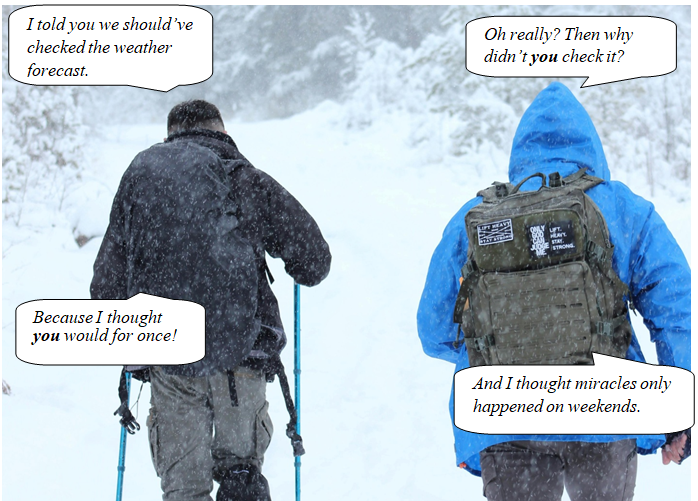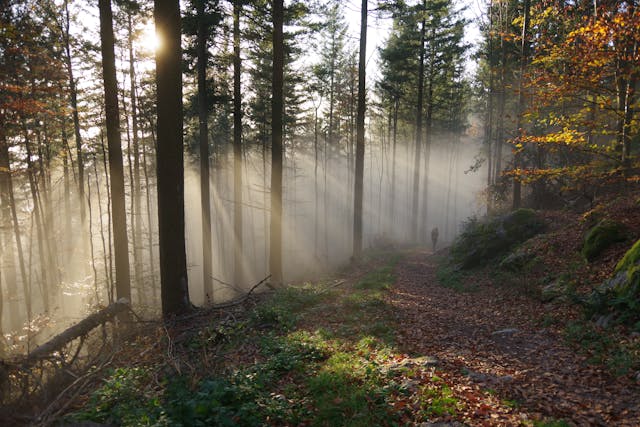What Every Hiker Should Know Before Hitting the Trail
Heading out for a hike is a great way to enjoy nature and get some exercise, but safety comes first. Before you put on your hiking boots, check the weather and the trail conditions.
Knowing the weather helps you have a safe and enjoyable hike. Conditions can change quickly, a sunny day can turn into rain, or strong winds can make it hard to stay balanced. By understanding the weather, you can plan better for your hike.

Trail conditions are just as important. They tell you what the trail is like. A dry, clear path looks very different from one that is muddy and slippery. Trail conditions can change quickly due to rain, snow, or how many people have used the trail.
There are many resources available to help you learn about hiking conditions. You can use online weather forecasts and trail websites to determine whether it’s a good day to hike or if you should wait for better weather. We will discuss these tools and resources later in this post, as it is crucial to stay safe and ensure that the trail matches your skill level.
Having this information will contribute to a safer and more enjoyable hiking experience, allowing you to avoid surprises and feel more confident during your adventure.
Tools and Resources to Check Weather Conditions
Checking the weather before your hike is important to avoid soaking wet socks or getting sunburned. Some weather websites and apps can give you accurate forecasts designed for hikers. These tools provide an hour-by-hour breakdown, so you know what to expect on your hike.
Using these tools makes planning your hike easier and helps ensure a safer trip. With a good understanding of the weather, you are closer to having a great hike.
Here’s how to do it effectively:
1. Use Reliable Weather Sources
Start by checking the weather forecast for the exact area where you’ll be hiking. General city forecasts aren’t always accurate for mountainous or remote regions.
Recommended tools:
- NOAA Weather (U.S.): Offers detailed forecasts by location and elevation.
- AccuWeather or Weather.com: Good for general forecasts with hourly and daily views.
- Mountain-Forecast.com: Excellent for mountain weather with summit-specific details.
Make sure to stay updated on the following important weather-related factors:
- Rain or Storm Forecasts: Monitor the predictions for rainfall or potential storms to prepare for changing weather conditions. Keep an eye on local alerts and updates to ensure safety during severe weather events.
- Wind Speeds: Pay attention to the estimated wind speeds, especially if you’re planning outdoor activities. Strong winds can impact everything from travel to the safety of outdoor structures.
- Temperature Variations with Altitude: Be aware that temperatures can change significantly as you gain elevation. If you’re hiking or traveling in mountainous areas, check the temperature forecasts at different altitudes to dress appropriately and stay safe.
- UV Index and Sun Exposure: Keep track of the UV index to understand the level of ultraviolet radiation you’re exposed to on sunny days. This will help you take necessary precautions, such as applying sunscreen or wearing protective clothing, to avoid skin damage.
2. Check Trail Conditions Online
Many hiking accidents happen due to poor trail conditions. Mud, snow, fallen trees, or even recent fires can make a trail dangerous or impassable.

Where to check:
- AllTrails, Gaia GPS, or Hiking Project: These platforms often have recent hiker reviews and trail condition updates.
- Local land management websites: National or state parks often post trail alerts and closures.
- Social media groups or forums: Local hiking Facebook groups, Reddit communities, or regional hiking forums can be goldmines for real-time info.
3. Look at Recent Trip Reports
It is important to search for recent trip reports from other hikers. These reports can provide valuable photos and personal insights about trail conditions that may not be included in official updates.
Websites like the Washington Trails Association (WTA) or local hiking clubs often have up-to-date reports, especially during peak seasons.
4. Call the Ranger Station
If you’re uncertain or planning to explore a less-frequented area, reach out to the local ranger station. Rangers can provide accurate and up-to-date information, particularly following recent weather events.
Inquire about the following:
- Trail closures
- Seasonal water sources
- Wildlife activity
- Avalanche risk in snowy areas
5. Check for Special Alerts
Before you go, check if there are any:
- Fire bans or air quality alerts
- Flood or storm warnings
- Wildlife advisories (e.g., bears, snakes, ticks)
These alerts are often posted on local forest service, national park, or state park websites.
Hiking is more enjoyable and safer when you’re prepared. Checking the weather and trail conditions only takes a few minutes but can save you from a miserable or dangerous experience. Stay informed, plan smart, and enjoy the adventure ahead.

Planning Your Hiking Trip with Weather and Trail Insights
With your weather and trail knowledge, you can plan a hike that is both exciting and safe. Adjust your plans based on the latest information you’ve gathered. If a storm is coming or trails are challenging, opt for a shorter route or a different location to keep the fun alive.
Packing gear is your next move.
Pack wisely: bring a raincoat and waterproof boots if rain is expected, or dress in layers with a sunhat if it will be sunny and cool. Having the right gear not only keeps you comfortable but can also make a significant difference in your trip.
Stay informed while hiking by using a compact radio or a weather alert app. This ensures you won’t be caught off guard by unexpected weather.
Evaluating Trail Conditions Before You Hike
Trail talk is where the fun begins! Joining an online hiking community helps you get real-time trail reports. Other hikers share information about trail conditions, like muddy paths, loose rocks, and areas where you might need extra gear, such as crampons or snowshoes.
Trail condition ratings can be confusing at first, but they are essential for your preparation. A simple rating or warning can completely alter your plans. Knowing whether a trail is labeled as “intermediate” or “expert” helps you pick one that matches your skills and gear. It’s like having an experienced hiker nudging you, saying, “Hey, be careful on that ridge.”
Seasons can also change trails a lot. In spring, you might find melting snow and muddy spots, while in fall, leaves may hide hazards. Researching seasonal changes allows you to choose the right trail at the right time. Doing a bit of research on seasonal changes can give you the edge you need to choose the right trail at the right time.
With all this information in your pocket, you’ll be ready to hit the trail with confidence, fully aware of what to expect!
Once Again:
Check the Weather and Trail Conditions Before Hiking!
Don’t let bad weather or a washed-out trail ruin your adventure. Here’s how to prepare:
Check the forecast: Use apps like NOAA, AccuWeather, or Mountain-Forecast. Look for wind, storms, and temp changes by elevation.
Trail updates: Look at AllTrails or local park websites for recent reviews and conditions.
Trip reports: Hiker forums and apps often share real-time info and photos.
Call ahead: Ranger stations know about closures, wildlife, and water availability.
Stay alert: Fire bans, flood warnings, or bear activity? Double-check official alerts.
